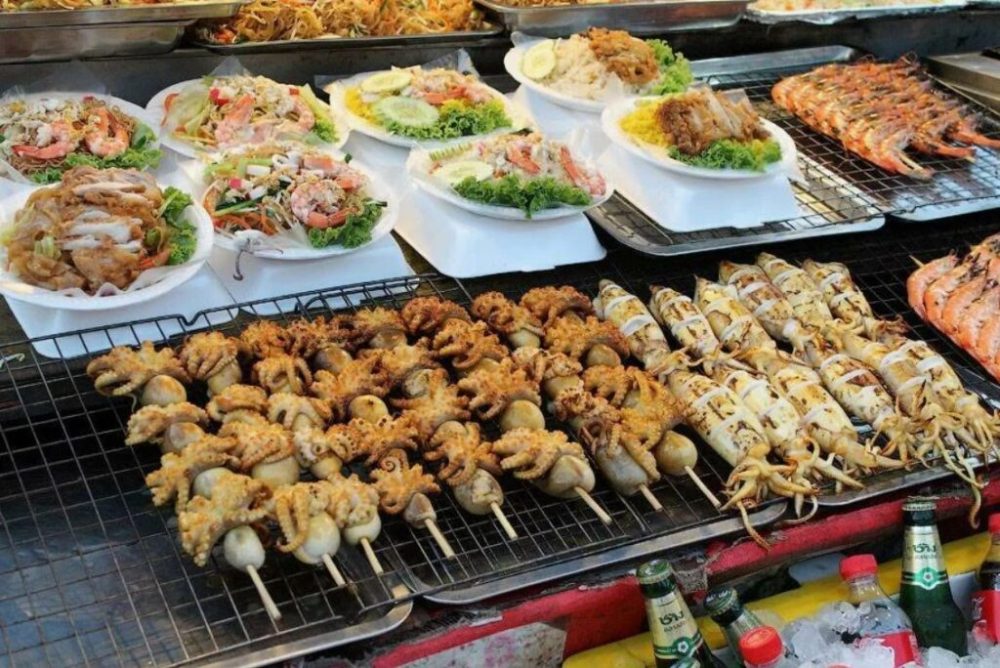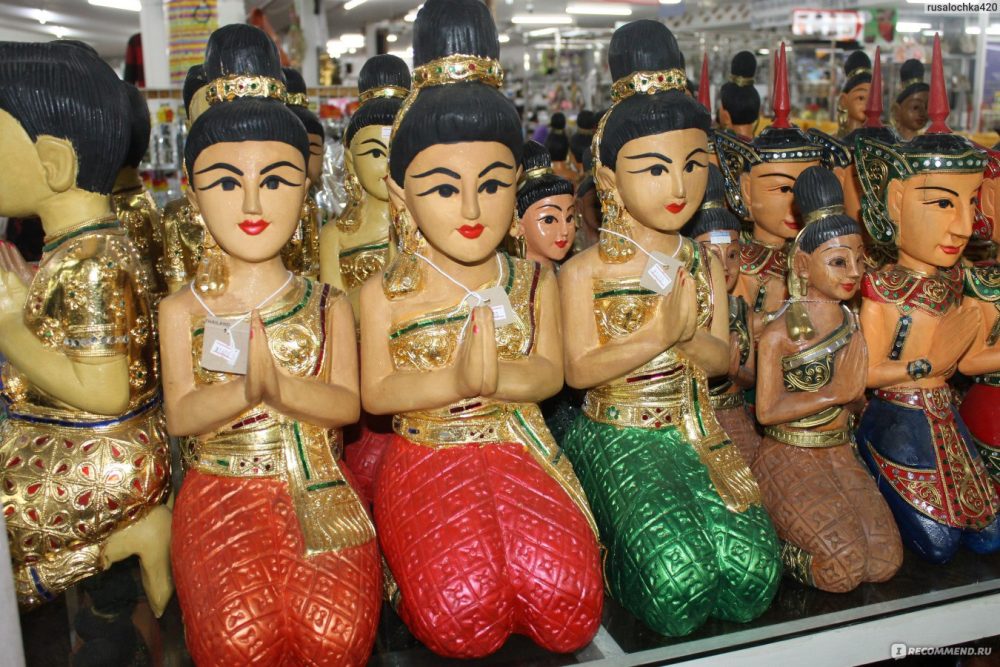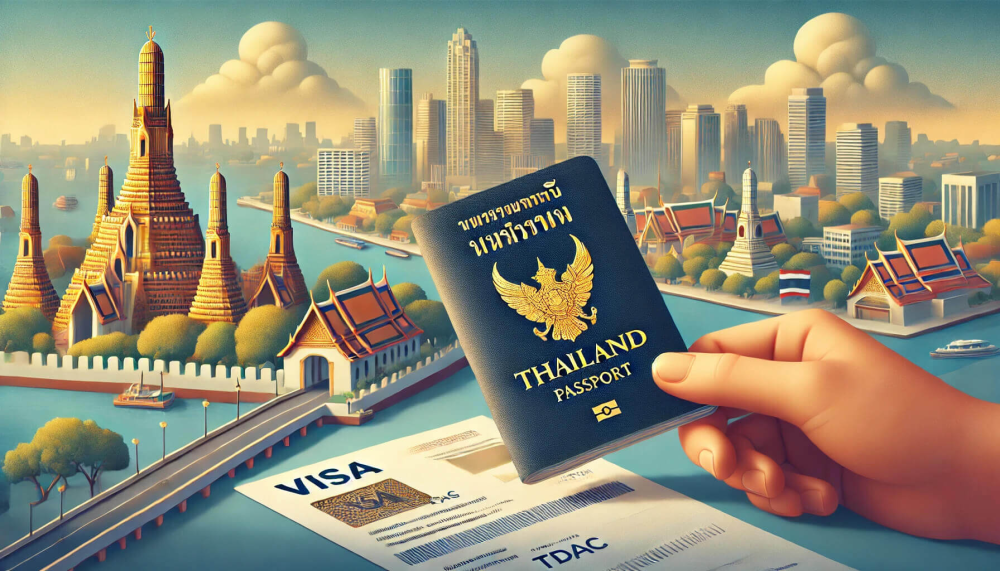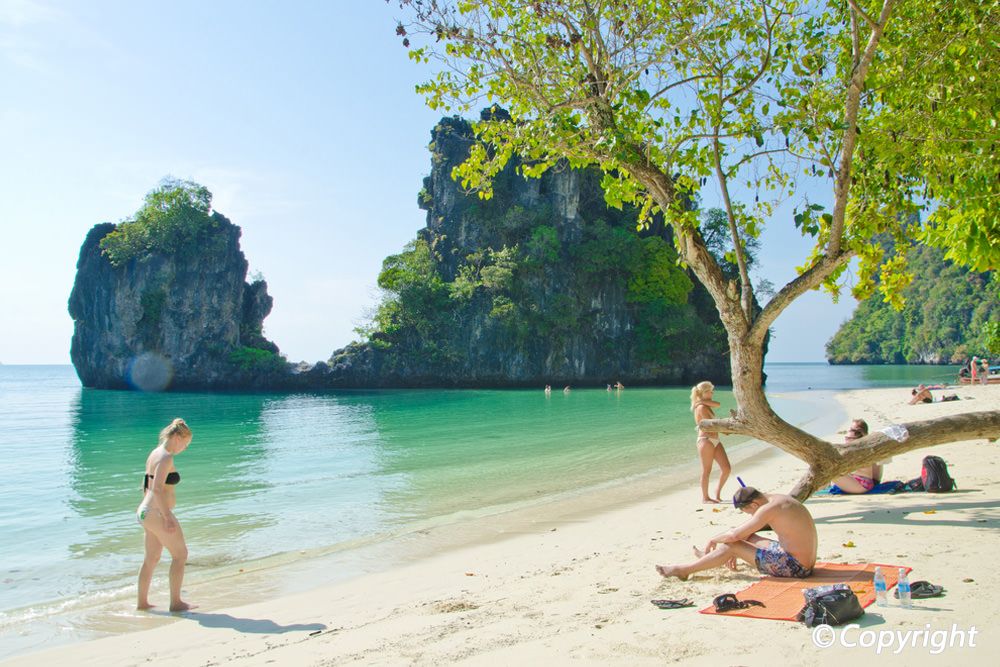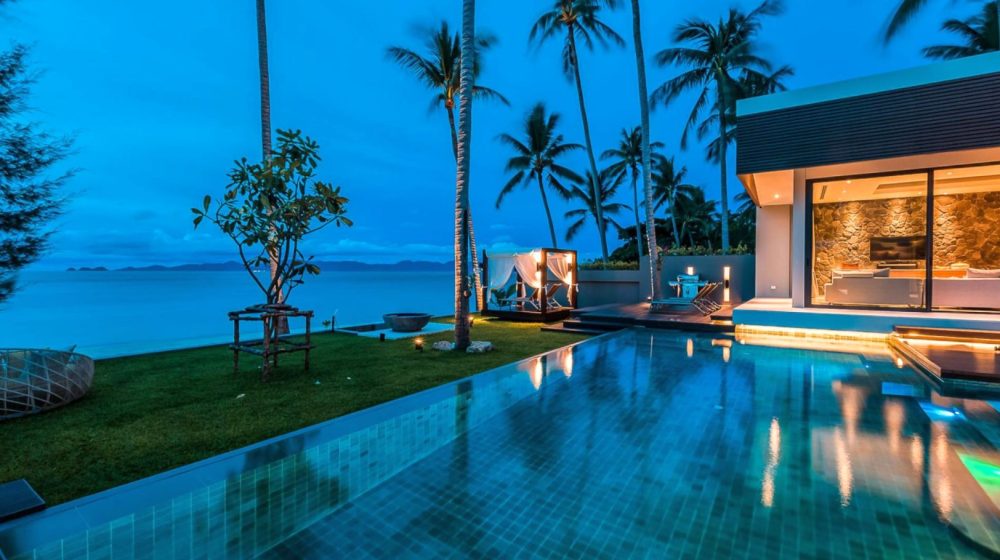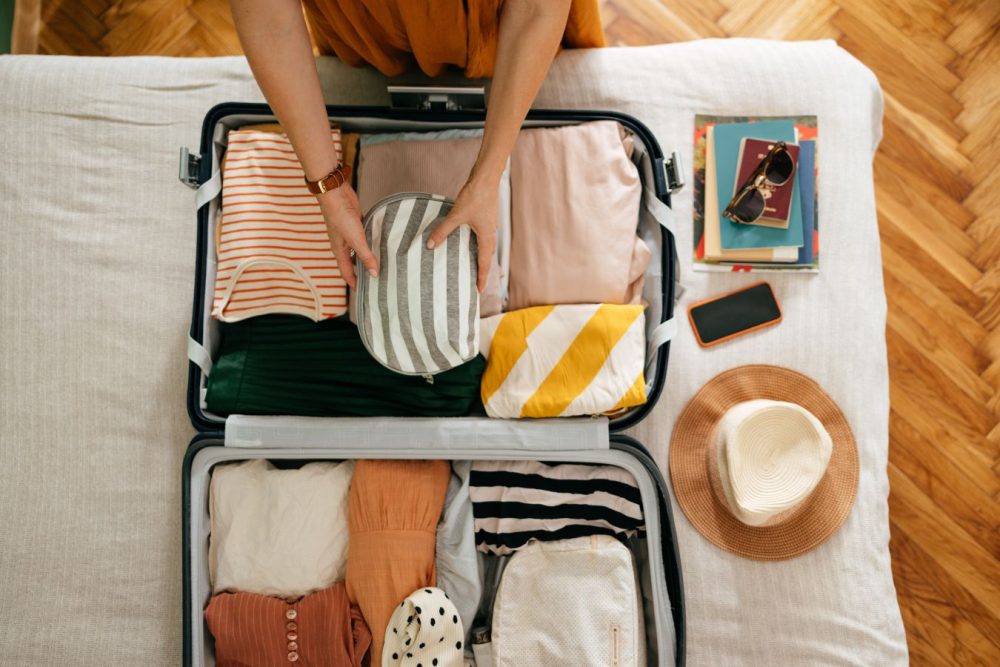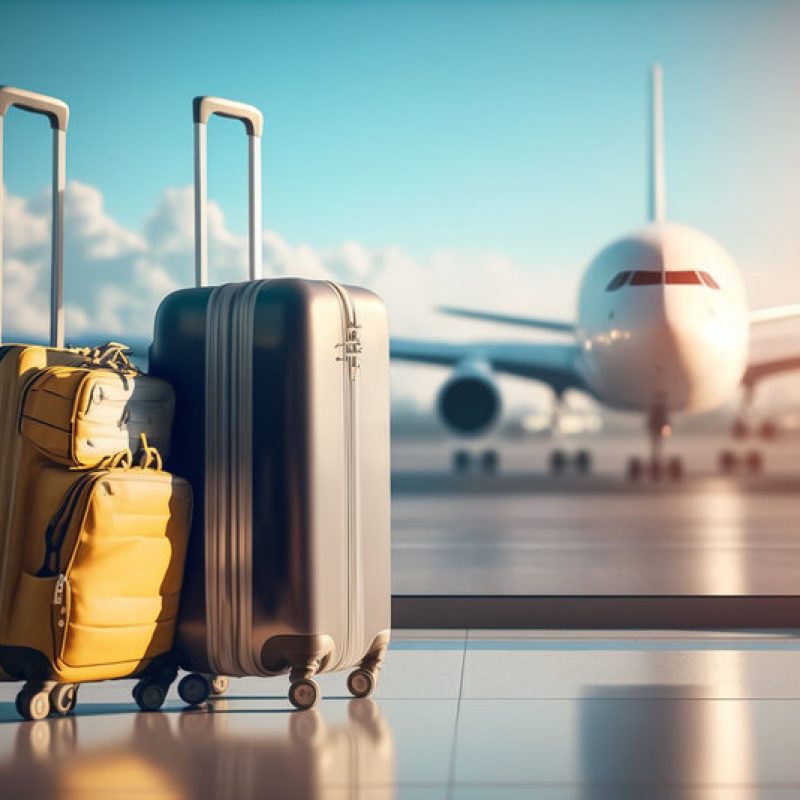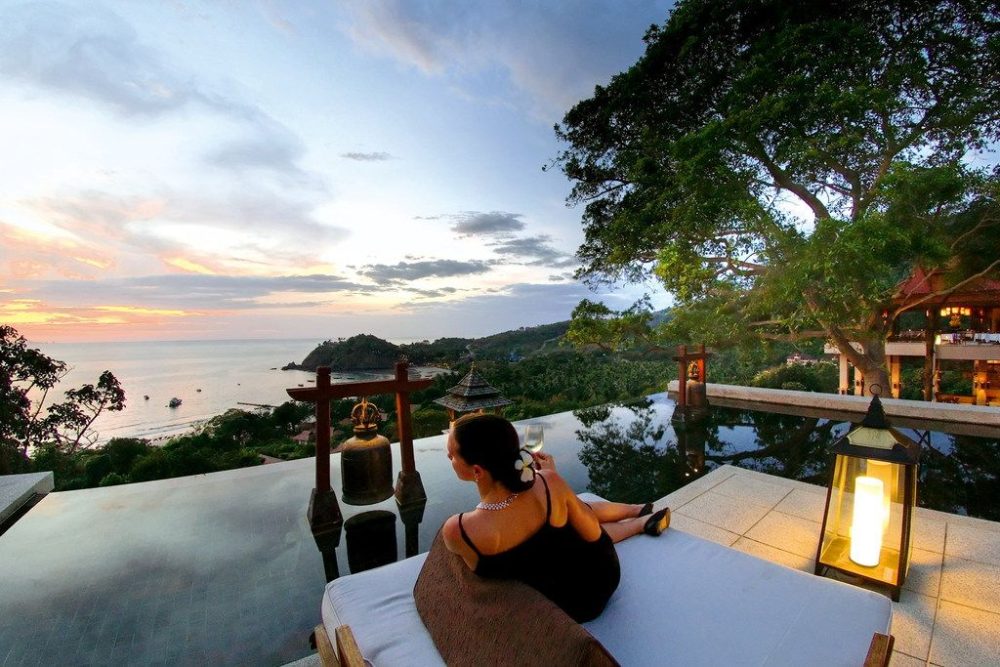Thai cuisine is a gastronomic adventure that will not leave any gourmet indifferent. Taste, spiciness, exotic ingredient combinations turn mealtime into an exciting journey.
For those heading to the Kingdom of Smiles, the inevitable question arises of what to try in Thailand in terms of food. Leave your fear of the unknown behind and let your taste buds explore the world of spices, aromas, and textures! Everyone will find a dish to their liking, from spicy soups to delicate desserts.

It is important to understand that food in Thailand is not just a way to satisfy hunger, but a whole philosophy that combines the balance of sweet, sour, salty, and spicy flavors.
The Art of Gastronomy: Best Dishes of Thai Cuisine
Tom Yum is a soup that can be called Thailand’s signature dish. Spicy, rich with aromas of lemongrass, kaffir lime leaves, and hot pepper – it makes your taste receptors vibrate with pleasure. In its traditional form, Tom Yum includes shrimp, squid, or chicken, with coconut milk making the soup milder.
In every corner of Thailand, Tom Yum is prepared slightly differently: in Bangkok, it is often rich and spicy, in the south, more seafood is added, and in the northern regions, they prefer a less pronounced sour taste.
Interesting fact: in 2011, Tom Yum was recognized as one of the healthiest soups in the world due to its high content of antioxidants and beneficial spices. Additionally, the combination of lemongrass, galangal, and chili helps boost immunity and metabolism. Thai Tom Yum is not just a soup, but a true healing elixir that Thais recommend for colds and fatigue.
Pad Thai is the king of street food and one of the most popular Thai dishes. Noodles fried with egg, soy sauce, peanuts, and shrimp, garnished with lime and fresh bean sprouts. You can adjust the taste by adding more spiciness or sugar to find your perfect combination. The classic Pad Thai is made with shrimp, but there are variations with chicken, pork, or even tofu for vegetarians.
Interestingly, Pad Thai appeared not so long ago – the dish was popularized in the mid-20th century when the country’s government tried to promote national cuisine as part of its cultural heritage. Now it is considered the best option for Thai food for tourists.
Budget-Friendly Eats in Thailand: Street Food Worth Trying
Thailand is famous for its affordable and delicious dishes that can be found everywhere. Thai food is known for its rich taste, variety of ingredients, and unique spice combinations. If you want to save money but are not willing to sacrifice taste, pay attention to:
- Som Tam – a spicy salad made from green papaya with garlic, chili pepper, peanuts, and tomatoes. Depending on the region, it may include pickled crabs, fermented fish, or even sweet coconut sugar. Som Tam is considered one of the best dishes of Thai cuisine and can be found in every cafe and market. The salad is an excellent choice for those who love spicy food;
- Khao Man Gai – chicken with rice cooked in flavorful broth, served with a spicy soy and ginger sauce. The dish has Chinese roots but has been adapted in Thailand by adding more greens and spices. Khao Man Gai is one of the most popular Thai dishes among tourists as it is not too spicy but very flavorful.
Additionally, you can try Muu Ping – pork skewers marinated in coconut milk and spices. They are sold on almost every corner and, when combined with sticky rice, make a complete breakfast or dinner. An ideal choice if you are looking for budget-friendly eats in Thailand.
Exotic Delights: Seafood and Spicy Cuisine
Those who love seafood will appreciate the variety of seafood: giant grilled prawns, crabs in curry sauce, and mussels with spicy sauce will be a real discovery. Thai markets offer an incredible selection of sea treasures that are cooked right in front of you – choose, and in a few minutes, you will have a smoky aromatic delicacy.
Spice lovers should try green curry – a dish where coconut milk softens the spiciness, and chicken or beef pairs perfectly with spices. Be careful: the spiciness may surprise even experienced gourmets! Unlike Indian counterparts, Thai curry is less fatty but much richer in taste.
Interesting fact: in Thailand, people often ask if you want the spiciness to be made “Thai style” or “tourist style.” If you are offered the latter, rest assured: the spiciness of green curry will be reduced several times.
Sweet Finale: Mango Sticky Rice
After spicy and hot dishes, you may crave something delicate and sweet. Thai cuisine offers a variety of desserts that will delight you with their taste and texture. If you are wondering what to try in Thailand for dessert, consider the following treats:
- Mango Sticky Rice – one of the best dishes of Thai cuisine, prepared with coconut milk. The velvety texture and natural sweetness of mango make this dessert a true gastronomic delight. Depending on the season, you may encounter different varieties of mango: some more sour, others incredibly sweet. An ideal choice if you want to try Thai food for tourists without too many spices and spiciness;
- Roti – thin pancakes fried in oil, then filled with bananas, chocolate, or condensed milk. They came to Thai cuisine from Muslim regions but have now become popular throughout the country.
If you are thinking about what to try in Thailand, Thai desserts are an excellent option!

Culinary Journey: Conclusions
When in a new country, do not be afraid to try new flavors and combinations. Not sure what to try in terms of food? Start with the classics, but don’t stop there – Tom Yum, Pad Thai, green curry, and mango sticky rice are just a small part of what you can eat affordably in Thailand.
Spice lovers will appreciate the spicy soups and curries, while fans of delicate flavors will enjoy creamy desserts and aromatic seafood. Thai dishes impress with the balance of sweet and spicy, making every meal a new gastronomic discovery. Immerse yourself in the world of the best dishes and enjoy every bite!

